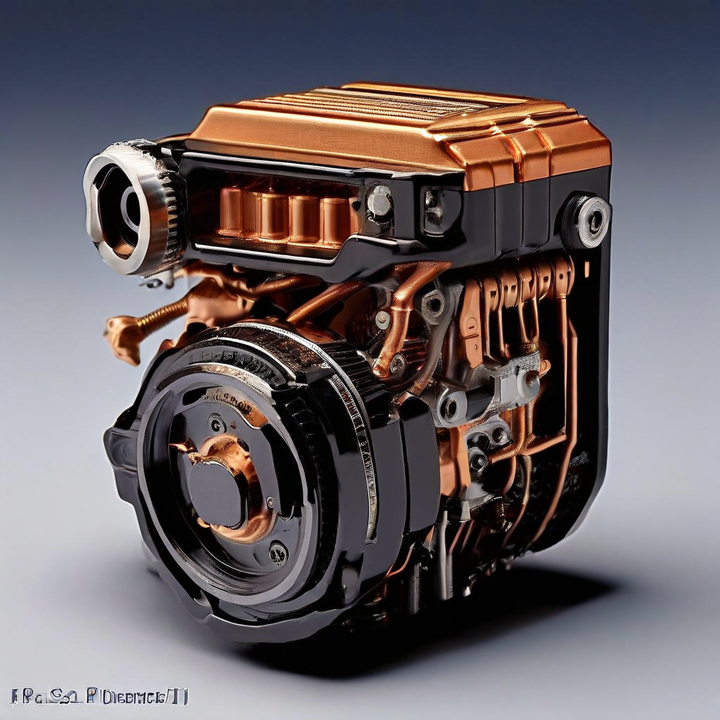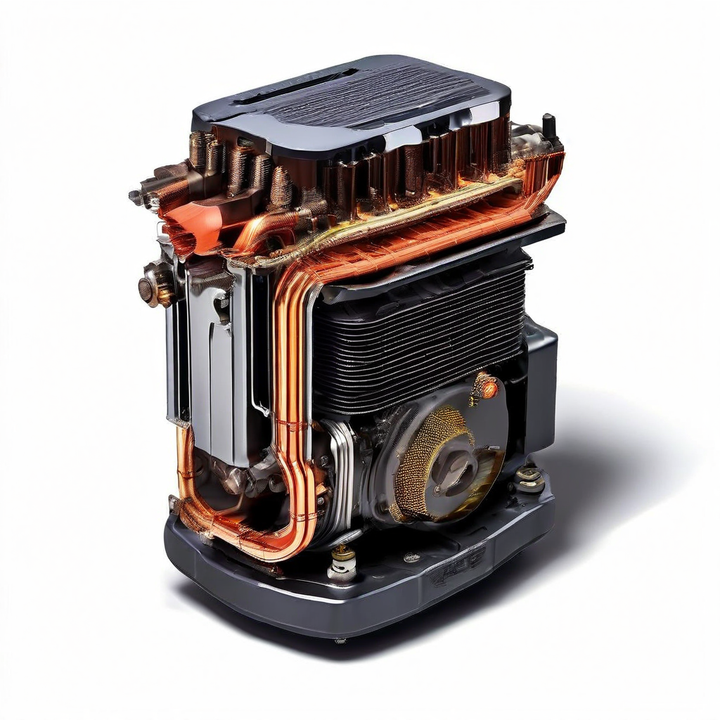


The diagnostic trouble code (DTC) P03AA indicates an issue with the cylinder pressure sensor circuit for cylinder 3. This code suggests that the engine control module (ECM) has detected an abnormal voltage or signal from the cylinder 3 pressure sensor, which is outside of the expected operating range or performance parameters.
The P03AA code is a diagnostic trouble code that indicates an issue with the cylinder pressure sensor circuit for cylinder number 3. This sensor, integrated into the glow plug, plays a crucial role in monitoring the combustion pressure within that specific cylinder. When the sensor detects abnormal pressure readings or experiences a malfunction, the engine control module (ECM) sets the P03AA code as a warning.
| Code | Description |
|---|---|
| P03AA | Cylinder 3 Pressure Sensor Circuit Range/Performance |
Like any other diagnostic code, the P03AA can be triggered by various underlying causes. Let's explore some of the most common culprits:
Over time, the cylinder pressure sensor itself can fail or become defective, leading to inaccurate or erratic pressure readings from cylinder 3. This can be caused by factors such as:
Excessive heat
Vibration
Wear and tear
The wiring harness, connectors, and terminals associated with the cylinder pressure sensor circuit are susceptible to damage or shorts. Even a minor issue in this area can disrupt the communication between the sensor and the ECM, resulting in the P03AA code.
Potential wiring issues include:
Damaged or corroded wiring
Loose or disconnected connectors
Shorted or open circuits
In some rare cases, the issue may lie within the ECM itself. An internal malfunction or software glitch can cause the ECM to misinterpret or mishandle the signals from the cylinder pressure sensor, triggering the code.
Outdated or incorrect software calibrations in the ECM can lead to improper interpretation of the cylinder pressure sensor data, causing the P03AA code to be set erroneously.
As a mechanic, I follow a systematic approach to diagnose the root cause of the P03AA code. Here are the steps I typically take:
Visual Inspection
Perform a thorough visual inspection of the wiring harness and connectors associated with the cylinder pressure sensor.
Look for any signs of damage, corrosion, or loose connections.
Scan Tool Diagnosis
Use a professional-grade scan tool to retrieve any freeze frame data or additional diagnostic information related to the P03AA code.
This data can provide insights into the specific conditions when the code was set, aiding in the diagnosis process.
Resistance and Voltage Testing
Conduct resistance and voltage tests on the cylinder pressure sensor circuit.
Check for open or short circuits, as well as verify proper voltage supply from the ECM.
Component Testing
If the wiring and connectors check out, test the cylinder pressure sensor itself.
This may involve removing the glow plug assembly and performing specific tests to verify the sensor's functionality.
Software Update
Check with the manufacturer for any available software updates or calibration files that may address known issues related to the P03AA code.
Once the root cause of the P03AA code has been identified, it's time to implement the appropriate repair procedures. Here are some common repair steps:
If the wiring or connectors are found to be damaged, carefully repair or replace the affected components to restore proper communication between the sensor and the ECM.
If the cylinder pressure sensor is confirmed to be faulty, replace it with a new one. This typically involves removing the glow plug and replacing the entire assembly.
In rare cases where the ECM is determined to be the cause, it may need to be replaced or reprogrammed with the latest software update from the manufacturer.
If a software update is available and deemed necessary, follow the manufacturer's instructions to update the ECM software or calibration files.
As a mechanic, I always emphasize the importance of preventive maintenance to avoid issues like the P03AA code. Here are some recommendations I share with my customers:
Regular Maintenance
Follow the manufacturer's recommended maintenance schedule.
Inspect and replace worn or damaged components regularly.
This can help prevent premature failures and extend the lifespan of critical components like the cylinder pressure sensor.
Wiring Protection
Take steps to protect the wiring harness and connectors from excessive heat, moisture, or physical damage.
Proper routing and shielding can go a long way in preventing wiring-related issues.
Proper Driving Habits
Encourage customers to adopt proper driving habits, such as:
Avoiding excessive idling
Avoiding high-load conditions that could stress the engine components unnecessarily
Overall Engine Health
Maintain the engine and related systems in good working condition.
Secondary issues, such as faulty sensors or leaks, can indirectly affect the cylinder pressure sensor operation and lead to diagnostic codes like the P03AA.
When it comes to addressing the P03AA code, the cost can vary depending on the root cause and the specific repair required. Here are some general cost estimates:
| Repair | Estimated Cost Range |
|---|---|
| Wiring Repair or Replacement | $100 - $300 (labor and parts) |
| Cylinder Pressure Sensor (Glow Plug) Replacement | $200 - $500 (labor and parts) |
| ECM Reprogramming or Replacement | $500 - $1,500 (labor and parts) |
It's important to note that these costs are approximate and can vary based on factors such as:
The make, model, and year of the vehicle
The labor rates in your area
The availability and pricing of replacement parts
I always recommend obtaining quotes from reputable repair shops or dealerships to get an accurate estimate specific to your vehicle.
The P03AA code may seem like a complex issue, but with the right knowledge and diagnostic approach, it can be effectively addressed. As a mechanic, I take pride in my ability to troubleshoot and resolve these types of issues, ensuring that your vehicle runs smoothly and efficiently.
Remember, preventive maintenance and proper driving habits can go a long way in avoiding diagnostic codes like the P03AA. If you ever encounter this code or any other automotive issue, don't hesitate to seek professional assistance. A skilled mechanic can guide you through the diagnostic and repair process, ensuring that your vehicle remains in top condition.
Stay safe on the roads, and happy motoring!
The P03AA code indicates an issue with the Cylinder 3 Pressure Sensor Circuit Range/Performance. It is related to the cylinder pressure sensor for cylinder number 3, which monitors the combustion pressure within that cylinder.
The common causes include a faulty cylinder pressure sensor, wiring issues (damaged wiring, loose connectors), ECM malfunction, and software/calibration issues in the ECM.
The diagnostic procedures involve visual inspection of wiring and connectors, scan tool diagnosis, resistance and voltage testing of the sensor circuit, component testing of the cylinder pressure sensor, and checking for software updates.
Repair procedures may include wiring repair/replacement, cylinder pressure sensor replacement, ECM replacement or reprogramming, and software updates, depending on the root cause identified during diagnosis.
Regular maintenance, protecting wiring from damage, following proper driving habits, and maintaining overall engine health can help prevent the recurrence of the P03AA code.
The cost can vary, but generally, wiring repair/replacement may cost $100-$300, cylinder pressure sensor replacement may cost $200-$500, and ECM reprogramming or replacement may cost $500-$1,500, including labor and parts.
The cylinder pressure sensor, integrated into the glow plug, plays a crucial role in monitoring the combustion pressure within the specific cylinder it is associated with.
When the cylinder pressure sensor malfunctions, it can lead to inaccurate or erratic pressure readings from the associated cylinder, causing the ECM to set the P03AA code as a warning.
Yes, outdated or incorrect software calibrations in the ECM can lead to improper interpretation of the cylinder pressure sensor data, resulting in the P03AA code being set erroneously.
Regular maintenance, as recommended by the manufacturer, can help prevent premature failures and extend the lifespan of critical components like the cylinder pressure sensor, reducing the likelihood of diagnostic codes like the P03AA.

Miguel started tinkering with car radios as a teenager, fascinated by the intricate dance of wires and circuits. This passion led him to pursue a career as an automotive electrician. For the past 10 years, Miguel has tackled everything from flickering headlights to mysterious electrical gremlins. He thrives on troubleshooting electrical problems and enjoys sharing his knowledge to empower car owners to understand their vehicles better.



